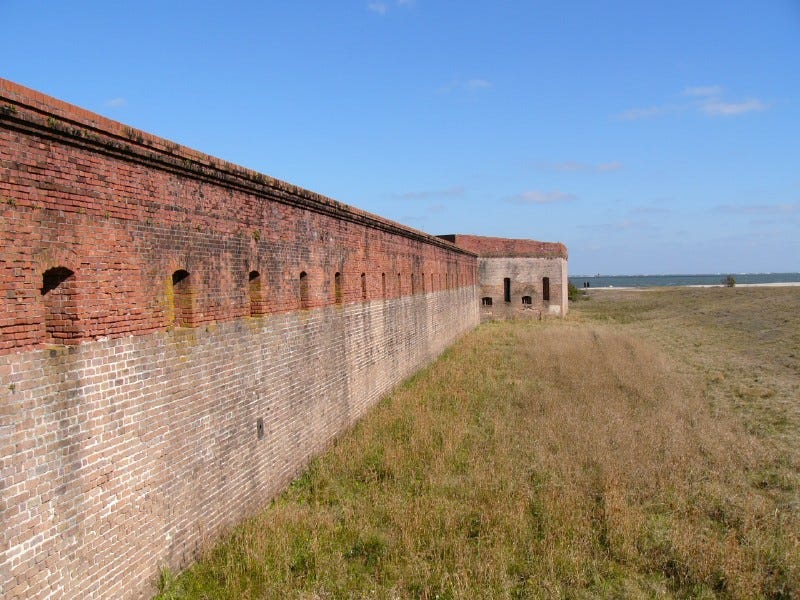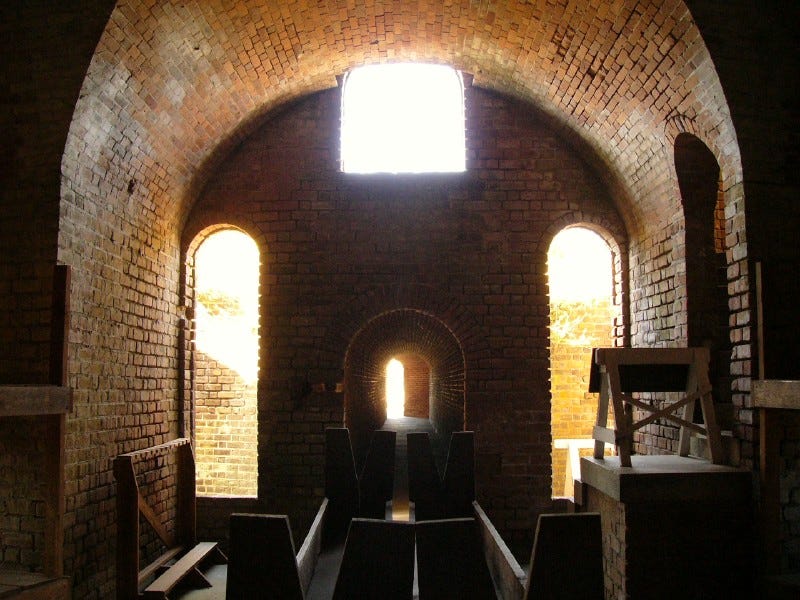FORT CLINCH: Fort Clinch State Park
Fort Clinch State Park offers spectacular north Florida ocean views and a Civil War era fort. Page 5.
Fort Clinch sits proudly upon the exact northeastern corner of Florida and offers a commanding view of both the Atlantic Ocean and the Cumberland Sound, which separates Florida from Georgia.
Fort Clinch is the centerpiece of Fort Clinch State Park that would be a must see Florida nature destination based only upon it's beaches and estuaries. The long jetty that extends far out in to the ocean is itself worth a trip
The admission price to enter Fort Clinch is only $2.50 per person (in addition to the $6 per vehicle fee to enter the state park) so it's easy to take a side trip into Florida's past while you're in Fort Clinch State Park hiking and biking the trails or visiting the beaches.
Great For Kids
The Fort's many unusual rooms and passage ways can give kids hours of entertainment as they enjoy their natural ability at appreciating novel spaces. Hey Mom, drop Captain Dad and his soldiers off at the fort while you make your escape to the Atlantic with a beach chair and a good book. There are rest rooms and a nice picnic area just outside the entrance to the fort in case you need to supply rations to your troops before sending them in to make believe battle.
History Of The Fort
Park brochures explain that construction on the fort was begun in 1847 to defend the deep water port of Fernandina, Florida. That port is still very much in use today.
Construction of the fort proceeded slowly and much of the fort remained to be built by the start of the Civil War. There were no federal troops garrisoned at Fort Clinch at the outbreak of the Civil War so Confederate troops took over the fort without incident. In 1862 General Robert E. Lee authorized the abandonment of Fort Clinch as federal troops began occupying barrier islands along the South Carolina and Georgia coasts.
Fort Clinch was almost finished in 1867, just in time to become militarily obsolete. The invention of the rifled cannon barrel allowed cannons to fire heavier shot, with greater velocity and accuracy. The era of stone and brick fortifications had come to a close.
The completed Fort Clinch now served no real purpose and was left to begin it's decent in to disrepair until 1898 when the war with Spain briefly revitalized interest in the fort.
Fort Clinch saw useful service one more time during World War II when the Coast Guard established a surveillance and communications outpost at the fort. German submarines were quite active in the Atlantic waters off Florida during the early part of the war and sank a significant amount of Allied shipping leaving the Gulf of Mexico for Europe. Florida's coastal residents were able to witness the war with their own eyes as ships could be seen exploding on the ocean horizon at night as they came under attack from Nazi submarines.
The sad irony of Fort Clinch is of course that it was obsolete before it was completed. It's a shame that the hardy people who built this place constructed a sturdy monument to their wasted effort that will last for centuries.
On the other hand, perhaps the fort does serve a truly useful function if it reminds present day visitors of the mountain of nuclear weapons waste our own generation is burying in the deserts of Nevada. Our own monument to fear will survive intact for thousands of years and provide our ancestors with ample opportunity to consider our place in history.
Like any older fellow, Fort Clinch may actually have a lot to say to us once we get him started.







